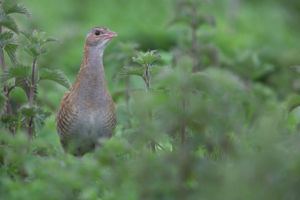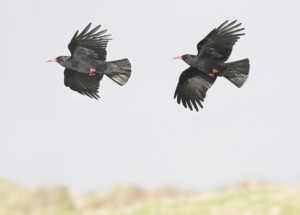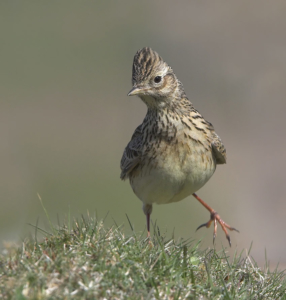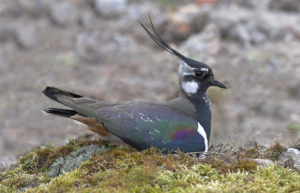Birds
Corncrake (Crex crex)

Inishbofin is one of the few places where the distinctive kerrx kerrx call of the globally endangered corncrake can be heard.
The Corncrake is on the IUCN red list of threatened species, due to population and range declines of more than 50% in the last 25 years across significant parts of its range. It is also listed in Annex 1 of EU Birds Directive.
Formerly an extremely common summer visitor, now limited to a few areas of west Galway, Mayo and Donegal. This drastic decline is mainly due to intensive farming practices, particularly mechanised hay cutting and early mowing for silage, which destroys the nests. Corncrakes are now confined to offshore islands and places like Inishbofin where late haymaking still takes place, and where difficult terrain precludes use of machinery.
Birds arrive in late April and males begin calling from areas of long grass cover and patches of nettles. Breeding is from May to early August, chicks hatch after 17 days, can feed themselves after 4 days and fly after 30 days. 2 broods are common. Chicks have been seen on Inishbofin well into September.
Until recently hay was still cut by hand with a scythe. Although mostly mown by machine now, farmers delay cutting until September to allow the birds to fledge. Meadows should be cut from the centre outwards to allow wildlife to escape.
In 2015 there were 12 calling male corncrakes on Inishbofin, making the island an important breeding site for this iconic bird.
Chough (Pyrrhocorax pyrrhocorax)

Resident along the rocky shores of the western seaboard
Chough looks like a typical all-black crow. At close range, however, its unique long, down-curved red bill and bright red legs make identification easy. Choughs also have more prominently “fingered” flight-feathers than our other crows, giving them a distinctive silhouette in the air. They also have a distinctive ‘Key-aww’ call.
Feeds mostly on insects and their larvae, worms and other subterranean invertebrates, using their curved bills to dig them out of the soil. They will also eat berries, grain, small mammals and birds.
Skylark (alauda arvensis)

Amber –listed in Ireland. Breeds in uplands and farmland.
Inishbofin is full of skylark song from late February to June, when birds soar high up over their breeding territory, singing constantly as they rise.
Lapwing (Vanellus vanellus)

Conservation Concern: Red-listed (National, BoCCI), SPEC 2 vulnerable (Europe)
Breeds in small numbers on Inishbofin.

